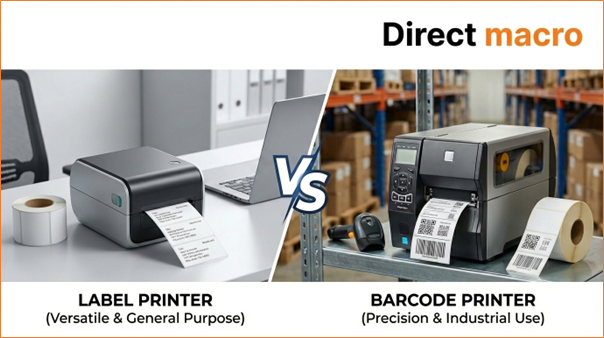What Monitor Do I Have? Check All You Need to Know
Have you ever found yourself staring at your monitor, wondering “what monitor do I have?” If yes, then read this till the very end. Whether you’re a gamer seeking optimal performance, a designer needing precise color accuracy, or a corporate professional aiming for efficiency, knowing your monitor’s details is crucial.
In this guide, we will explore everything you need to know about identifying your monitor model and specs, making the process straightforward and hassle-free. So, without further ado, let’s dive into the details.
What Monitor Do I Have – Accessory or Necessary
As a matter of fact, knowing your monitor specs and model is important for everyone, even if you are just an everyday user. However, it turns from luxury to a necessity for the following categories of people.
For Corporates
If you are a corporate, the one thing you can’t compromise on is efficiency. So, if you know your monitor model and specs, you can:
- Set up multi-monitor configurations
- Ensure compatibility with software
- Improve overall productivity
As a result, you can take your efficiency to the next level and accelerate your growth.
For Gamers
As a gamer, the right monitor can mean the difference between victory and defeat. If you don’t know your monitor well, you may end up with:
- Undesired refresh rates and resolutions
- Low response times headaches
These are all critical factors that will impact your overall gaming experience. So, if you want to get the most out of your hardware, you need to find the elephant in the room“ what monitor do I have?”
For Designers
Professional creators and designers rely heavily on color accuracy and screen real estate. So, if you want to produce art that is true to life, you need to understand your monitor’s capabilities. Because, it massively contributes in creating detailed designs and accurate color grading.
Where You Will Need This Information
You may be wondering why I need this information if I am just an everyday user. There are several scenarios where you might need it or you might end up walking on the wrong road. These real-life scenarios may include but are not limited to:
- Firstly, when upgrading your PC setup, it’s crucial to ensure that your new hardware is compatible with your monitor.
- Secondly, when encountering issues like flickering screens or poor resolution, knowing your monitor’s details can assist in troubleshooting.
- Additionally, when selling or buying second-hand monitors, having this information readily available can streamline the transaction.
How to See What Monitor I Have – Most Easiest Ways
Check Labels and Stickers on the Back or Underside
One of the simplest ways to identify your monitor model is by checking the labels and stickers typically found on the back or underside of the monitor. These labels usually include:
- Manufacturer
- Model number
- Serial number (Occasionally)
Must ensure you have a clear view of these details, which can often be found near the power input or along the monitor’s frame.
Utilize the Monitor’s On-Screen Display (OSD) Menu
Most modern monitors come equipped with an On-Screen Display (OSD) menu. Accessing this menu can provide you with detailed information about your monitor. You can navigate through the OSD using the buttons on the monitor to find sections labeled “Information” or “Settings” where the model and specs are usually displayed.
How to Check Monitor Specs on Windows
If you are a Windows user, you can check your monitor model utilizing any of the following ways:
Using Windows Settings
Click on the Start menu and select the gear icon to open Settings. Select ‘System’.

Then, tap on ‘Display.’

Scroll down and click on ‘Advanced display settings.’

Here, you will find details about your monitor, including the resolution, refresh rate, and bit depth.

Using Device Manager
Right-click on the Start menu and select ‘Device Manager.’ Then, expand the ‘Monitors’ section.

Right-click on your monitor and select ‘Properties.’

Using Third-party Software
There are various third-party tools available that can provide in-depth information about your monitor. Some popular programs are:
- Speccy
- HWInfo
- AIDA64
Simply download and install one of these tools, run the program, and navigate to the display section to see detailed specs and model information.
How to Check Monitor Specs on macOS
If you are a macOS user, you can follow any of the following procedures to check “what monitor do I have”.
Using System Preferences
- Click on the Apple logo in the top-left corner and select ‘System Preferences.’
- Click on ‘Displays.’ Here, you will see basic information about your monitor.
Using About This Mac
- Click on the Apple logo and select ‘About This Mac.’
- Click on the ‘Displays’ tab. This section provides more detailed information about your monitor, including the model and resolution.
Online Tools and Resources You Can Go For
How to Check Monitor Model Number on Manufacturer’s Website
Most monitor manufacturers have websites where you can enter your monitor’s serial number or model number to get detailed information.
- Visit the official website of your monitor’s manufacturer
- Find the support or product page
- Enter the required details
Following these steps, you can access user manuals, driver updates, and unlock more details related to your monitor.
Useful Websites for Cross-referencing Monitor Models and Specs
You can visit websites like Display Specifications to cross-reference monitor models and specs. Simply enter the model number, and these databases will provide you with comprehensive information about your monitor’s features and capabilities.
How it Can Help Troubleshooting Common Issues
Let’s come to the point where knowing your monitor specs and model will be incredibly helpful. It is the state when you are troubleshooting issues and trying to fix them. So, if you have a clear idea, what monitor do I have, you can fix them without any major hiccups or scratching your head out of confusion. Here are some examples you should look at:
Refresh Rate and Screen Flickering
One common issue is screen flickering, which can often be traced back to an incompatible refresh rate. By knowing your monitor’s supported refresh rates, you can ensure that your display settings are configured correctly.
Most modern monitors support a refresh rate of 60Hz, but gaming monitors can go up to 144Hz or even 240Hz. Setting your computer to a refresh rate that your monitor can’t support can cause flickering.
How to Fix:
- Check Supported Refresh Rates: Refer to your monitor’s manual or specifications sheet.
- Adjust Settings: On your computer, go to Display Settings and adjust the refresh rate to match one of the supported values.
Resolution and Blurry Display
Another key issue is the blurry display which often results from using a non-native resolution. Monitors have a specific resolution that provides the best clarity and sharpness. If the resolution is set to something other than the native resolution, text and images can appear blurry.
How to Fix:
- Identify Native Resolution: Check the monitor’s specs for the native resolution.
- Adjust Settings: Go to your computer’s Display Settings and set the resolution to the native value.
Color Calibration Issues
Incorrect color calibration can cause colors to appear washed out or overly saturated. If you know your monitor’s color gamut and calibration capabilities, you can adjust the settings to achieve accurate color representation.
How to Fix:
- Check Color Gamut: Look up your monitor’s specs to find out its color gamut.
- Use Calibration Tools: Use built-in calibration tools in your operating system or third-party software to adjust color settings.
Connectivity Problems
Sometimes, the issue might be related to the type of connection you are using. Knowing whether your monitor supports HDMI, DisplayPort, or DVI can help you troubleshoot connectivity problems.
How to Fix:
- Verify Supported Connections: Refer to your monitor’s specs to see which connections are supported.
- Check Cables and Ports: Ensure that you are using the correct cable and that it is properly connected to the appropriate port.
Response Time and Ghosting
Ghosting occurs when fast-moving images leave a trail behind them, which is often due to a slow response time. Knowing your monitor’s response time can help you understand if this is the cause of the issue.
How to Fix:
- Check Response Time: Refer to the monitor’s specifications for its response time.
- Adjust Settings: If possible, adjust the response time settings through your monitor’s on-screen display menu.
Input Lag
Input lag can be a significant issue for gamers, causing delays between actions and their corresponding on-screen movements. Uncover the input lag of your monitor so you can determine if it’s suitable for fast-paced activities.
How to Fix:
- Identify Input Lag: Check the monitor’s specifications or reviews for input lag details.
- Optimize Settings: Use gaming mode or other low-latency settings available on your monitor.
Brightness and Backlight Bleeding
If you notice uneven lighting or backlight bleeding, it can often be traced back to the monitor’s brightness settings.
How to Fix:
- Check Brightness Specifications: Look up your monitor’s brightness range in the specs.
- Adjust Settings: Use the monitor’s on-screen display menu to adjust the brightness to an appropriate level.
This is how understanding your monitor’s specifications can significantly aid in troubleshooting and resolving these common issues, ensuring optimal performance and display quality.
FAQs
What monitor do I need for gaming?
For a top-notch gaming experience, look for a monitor with a high refresh rate (144Hz or higher), a low response time (1ms to 3ms), and G-Sync or FreeSync support. These features reduce screen tearing and make gameplay smoother.
How to check monitor model in Windows 10?
In Windows 10:
- Open Settings
- Navigate to System > Display
- Click on Advanced display settings
You’ll see your monitor’s model and other details in this section.
How to fix monitor flickering?
To tackle flickering issues:
- Adjust your monitor’s refresh rate to match your computer’s settings.
- Check and secure all cable connections.
- Update your graphics drivers.
How can I extend the lifespan of my monitor?
Avoid exposing the monitor to extreme temperatures, keep it clean, use a surge protector, and turn off the monitor when not in use to extend its lifespan.
Final Curtain
In a nutshell, knowing your monitor’s model and specs is essential, if you want to optimize your experience, whether for gaming, designing, or corporate use. By following the steps outlined in this guide, you can easily identify your monitor and its capabilities.
Remember, a well-informed user can make the most out of their hardware, ensuring peak performance and efficiency. With this knowledge in hand, you’re now equipped to check your monitor specs and model with ease.
Lastly, if you are willing to upgrade your monitor, Team Direct Macro will be more than happy to help you out. Contact our support team and make informed and smart decisions with us.
Do you need advice on buying or selling hardware? Fill out the form and we will return.

Sales & Support
(855) 483-7810
We respond within 48 hours on all weekdays
Opening hours
Monday to thursday: 08.30-16.30
Friday: 08.30-15.30








